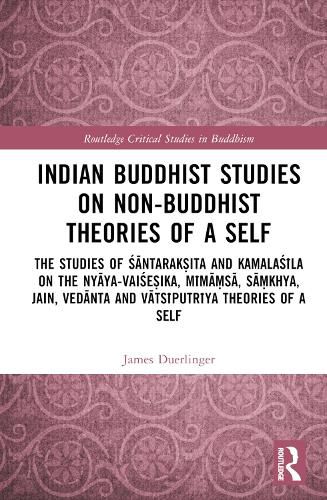Readings Newsletter
Become a Readings Member to make your shopping experience even easier.
Sign in or sign up for free!
You’re not far away from qualifying for FREE standard shipping within Australia
You’ve qualified for FREE standard shipping within Australia
The cart is loading…






This book addresses prominent views on the nature of the self in Indian philosophical traditions and presents Buddhist critiques of those conceptions through the translation and commentary on Santaraksita’s chapter in the Tattvasamgraha on theories of a self and Kamala-sila’s commentary on it in his Tattvasamgrahapanjika.
The book is comprised of an introduction presenting the theories of a self in the Indian Buddhist Middle Way philosophies and in the different philosophical schools Santaraksita and Kamalasila study and offers a background for the translation. The detailed translation that follows reveals the theories of a self that are explained in the philosophical schools in India called the Nyaya-Vaisesika, Mimamsa, Samkhya, Jain, Advaita Vedanta, and Vatsiputriya. It is complemented by a thorough commentary by the author which brings the text to light for a modern audience.
A useful contribution to Indian philosophy and global philosophy, this book will be of interest to researchers in the fields of Philosophy, Religious Studies and Buddhist Studies.
$9.00 standard shipping within Australia
FREE standard shipping within Australia for orders over $100.00
Express & International shipping calculated at checkout
This book addresses prominent views on the nature of the self in Indian philosophical traditions and presents Buddhist critiques of those conceptions through the translation and commentary on Santaraksita’s chapter in the Tattvasamgraha on theories of a self and Kamala-sila’s commentary on it in his Tattvasamgrahapanjika.
The book is comprised of an introduction presenting the theories of a self in the Indian Buddhist Middle Way philosophies and in the different philosophical schools Santaraksita and Kamalasila study and offers a background for the translation. The detailed translation that follows reveals the theories of a self that are explained in the philosophical schools in India called the Nyaya-Vaisesika, Mimamsa, Samkhya, Jain, Advaita Vedanta, and Vatsiputriya. It is complemented by a thorough commentary by the author which brings the text to light for a modern audience.
A useful contribution to Indian philosophy and global philosophy, this book will be of interest to researchers in the fields of Philosophy, Religious Studies and Buddhist Studies.